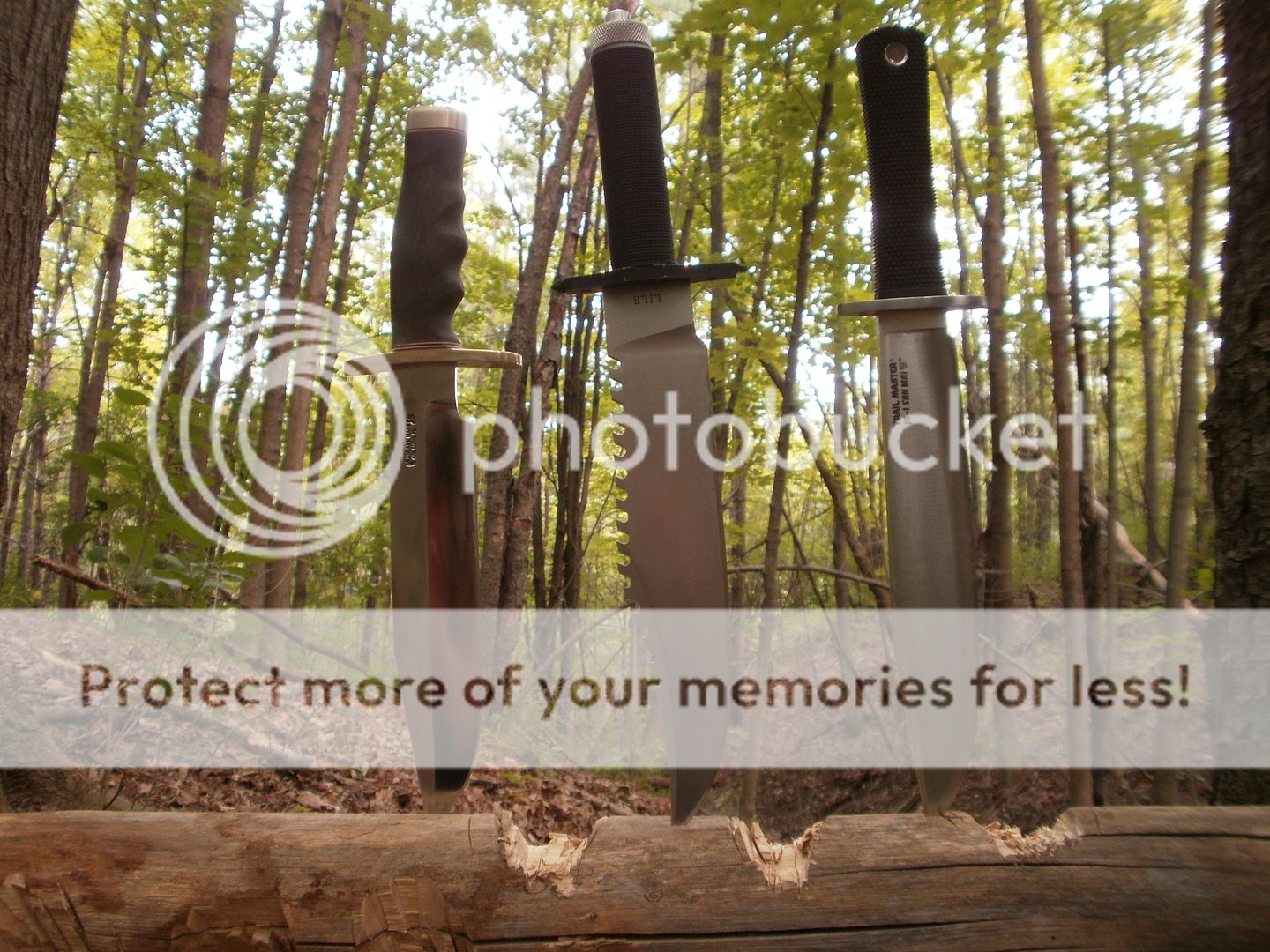A full convex blade grind like the SM III Trail Master and Recon Scout mimics a more acute
edge angle and reduces friction even further. This is why the mentioned knives cut like magic.
The downside is a more fragile edge.
.
I have bought a few months ago a brand-new Cold Steel San Mai III Trailmaster, specifically for the purpose of comparing chopping performance to my other knives. The original edge was flawless and razor sharp, and it cut wood like absolute crap. It was out-chopped, at 17 ounces and 9.5", by an 11 ounces Al Mar "Special Warfare" that was 7.75" long, and which had a correct hollow grind with a 0.020" V-edge... Not out-chopped by much but still...
The Trailmaster started to cut a little better when I carved a deep V-edge into its way too fat convex, but it never got beyond about 2/3rds of the performance of my Randall Model 12, which means around half the performance of my Lile Mission...:
The Trailmaster blade felt quite blade-heavy just from the convex swelling, which is why the Lile "Mission is actually lighter than the Trailmaster by a fraction of an ounce(!)... Since the "Mission" has a correct true flat grind, it still outperforms by a huge margin a knife that weights the same and looks far smaller... How is that supposed to translate into "magical" cutting performance completely confounds me, but what do I know?
As far as low energy slicing is concerned, to even consider that convex has anything to offer over a thin V-edge is quite extraordinary, and was never a claim of Moran and other early proponents of convex edges (in the 1970s)...: Moran explicitly designed convex edges for chopping and other high-energy contests, hanging manila rope being a big fixtures in those days (one can see how a full convex might help for that)... Few of today's convex edges proponents even seem to remember they used to be called "Moran edges"... This means that, in those days, none of the ancient blades, outside of axes, were thought to be that way through an intended design, instead of a byproduct of the available sharpening/finishing method... Maybe convex edges can make wood curls better but that is about it, slicing wise...
Gaston








